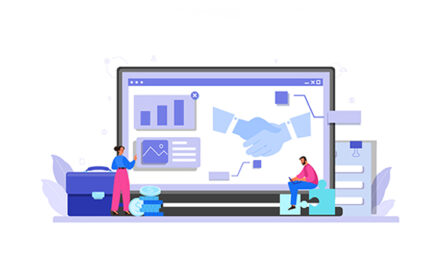Key Takeaways
- Businesses can implement several effective strategies to improve their CRM adoption rates, such as improving user engagement, providing comprehensive user training, enhancing user experience, and many more.
- High CRM adoption rates are crucial for businesses looking to enhance customer satisfaction, increase sales, improve data accuracy, streamline processes, and boost employee engagement.
- Businesses should be aware of the challenges that hinder CRM adoption, such as resistance to change, lack of executive support, insufficient user training, poor user experience, inadequate data management, and insufficient metrics tracking.
Are you tired of low CRM adoption rates?
Does your CRM system need to live up to its potential?
Well, you’re not alone! Many businesses struggle with low CRM user adoption rates, which can lead to missed opportunities and lost revenue.
Factors such as lack of user training, resistance to change, and poor user experience can cause low CRM adoption rates.
But, by implementing the right strategies, businesses can increase CRM adoption rates and leverage the full potential of their CRM system.
In this article, we will explore 10 effective strategies that will help you increase user adoption, overcome common challenges, and optimize your CRM system.
We’ve covered from enhancing user engagement to establishing executive support!
Let’s dive in!
10 Stellar ways to improve your CRM user adoption rate

1. Improve user engagement
User engagement is critical for CRM adoption. To improve user engagement, businesses should focus on creating a culture of collaboration and communication.
This can be achieved by encouraging user participation, providing forums for discussion, and recognizing top contributors.
Additionally, businesses should ensure that their CRM system is user-friendly and intuitive, with easy-to-use features and a clean interface.
By fostering a positive user experience, businesses can increase user engagement and improve CRM adoption rates.
2. Provide comprehensive user training
One of the most common reasons for low CRM adoption rates is lack of user training. To address this, businesses should provide comprehensive user training to all users, including new hires and existing employees.
Training should cover all aspects of the CRM system, including basic functionality, advanced features, and best practices for usage.
Training should also be tailored to specific user roles and ongoing to ensure that users stay updated with the latest updates and changes.
3. Enhance user experience
A positive user experience is essential for improving CRM adoption rates. Therefore, businesses should optimize the system’s functionality and design to enhance the user experience.
By using user feedback, running user tests, and spending money on user experience design, this can be accomplished.
Additionally, businesses should prioritize system stability and speed to ensure users have a seamless system experience.
4. Optimize data management
Effective data management is key to getting the most out of a CRM system. To optimize data management, businesses should focus on standardizing data entry, minimizing duplicates, and regularly cleaning up outdated data.
Moreover, businesses should establish clear data governance policies and procedures to ensure that data is accurate, complete, and up to date.
Businesses can ensure that their CRM system provides reliable insights and value to the organization by optimizing data management.
5. Customize CRM for your business needs
Every business has unique needs and requirements when it comes to CRM. To improve CRM adoption rates, businesses should consider customizing their CRM system to align with their specific needs.
This can be achieved by leveraging custom fields, workflows, and reports to create a tailored experience for users.
Additionally, businesses should consider integrating their CRM system with other tools and applications to streamline processes and enhance functionality.
6. Establish effective communication
Effective communication is critical for successful CRM adoption. Therefore, businesses should give users clear and simple instructions, recommendations, and best practices for using the system to develop effective communication.
Additionally, businesses should consider establishing a central repository for information and documentation to ensure users can access resources easily.
Regular communication with users through newsletters or user groups can also improve CRM adoption rates.
7. Offer incentives
Incentives can be a powerful tool for improving CRM adoption rates. Businesses should consider offering incentives, such as bonuses or recognition, to users who demonstrate high levels of engagement and usage.
Additionally, businesses can gamify the CRM experience by creating challenges and competitions to encourage user participation and engagement.
8. Track and analyze metrics
Measuring and tracking CRM adoption rates is important to understand your strategies’ effectiveness.
By tracking metrics such as the number of active users, the frequency of usage, and the quality of data entered, you can identify areas for improvement and adjust your strategies accordingly.
Analyzing these metrics helps determine if your CRM meets your business needs and goals.
9. Encourage and respond to feedback
Encouraging and responding to end-user feedback is critical in improving CRM adoption rates. By regularly soliciting feedback through surveys, focus groups, or one-on-one meetings, you can identify pain points and challenges that users face when interacting with the CRM system.
Once you have gathered this feedback, responding to it in a timely and meaningful manner is essential. You can address common concerns or suggestions by implementing changes to the CRM system or providing additional training to users.
This demonstrates to your team that their input is valued and that you are committed to their success, which can lead to increased user adoption and satisfaction with the CRM system.
10. Manage change effectively
Managing change effectively is an essential strategy to improve CRM adoption rates. However, changes to the CRM system can cause uncertainty and resistance among end-users, so it is vital to communicate the changes clearly and in advance.
You can minimize resistance and increase buy-in by involving users in the decision-making process and providing sufficient training and support during the transition period.
Additionally, it is essential to monitor the impact of the changes and make adjustments as needed to ensure that the CRM system continues to meet the needs of your team and organization.
Advantages of CRM user adoption

CRM user adoption offer a range of advantages for organizations seeking to improve their customer relationship management efforts. Here are some of them:
Enhanced customer satisfaction and loyalty
A high CRM adoption rate can lead to a more personalized and responsive customer experience.
By capturing and analyzing customer data, you can gain insights into their needs, preferences, and behaviors, allowing you to provide tailored solutions and support.
It can result in higher customer satisfaction and loyalty and increased customer lifetime value.
Improved sales performance and revenue growth
A well-implemented and utilized CRM system can give your sales team the tools and insights they need to be more effective and efficient.
Your team can prioritize their efforts and focus on high-value prospects by tracking and managing leads and opportunities in the CRM system. It results in improved sales performance and increased revenue growth.
Increased data accuracy and quality insights
A high level of CRM adoption leads to increased data accuracy and quality insights. When users regularly input data into the CRM system, it provides a single source of truth for customer information that can be relied upon across the organization.
It allows for better decision-making and enables organizations to gain a more complete understanding of their customers and their needs.
Streamlined processes and increased efficiency
Effective CRM adoption can lead to streamlined processes and increased efficiency. By using the CRM system to automate routine tasks and workflows, organizations can reduce the time and effort required to complete these tasks manually.
It allows teams to focus on more strategic activities that drive value for the organization, such as building relationships with customers or developing new products and services.
Higher employee engagement and retention
When employees are provided with the tools and resources they need to succeed, they are more likely to be satisfied with their jobs and feel invested in the organization’s success.
Additionally, effective use of the CRM system can help employees see the impact of their work on the organization and customers, increasing their sense of purpose and motivation.
Thus, it can ultimately lead to improved retention rates and reduced organizational turnover costs.
Challenges that hinder CRM adoption
Below are some of the obstacles that hinder CRM adoption:
Resistance to change among employees
One of the biggest challenges of CRM adoption is employee resistance to change. Employees may resist using new software or processes due to fear of the unknown or a perceived increase in workload.
This challenge can be overcome by providing adequate training and support, involving employees in the process, and showing the benefits of the CRM.
Insufficient executive support
Without executive buy-in and support, achieving high levels of CRM adoption can be challenging. Administrative support is essential for ensuring that the necessary resources and budget are allocated for CRM adoption.
One way to overcome this challenge is to engage executives in the CRM adoption process and effectively communicate the advantages of CRM to the entire company.
Inadequate user training
Lack of training can lead to low adoption rates as employees may need to learn how to use the CRM effectively. Therefore, training should be comprehensive and ongoing to ensure employees are comfortable and confident using the software.
One way to tackle this challenge is by investing in training and development initiatives and ensuring continuous support.
Poor user experience design
If the CRM software is user-friendly and easy to navigate, it can lead to satisfaction and high adoption rates. Therefore, the user interface should be intuitive and easy to use, focusing on usability and functionality.
This challenge can be addressed by involving end-users in the design process and conducting user testing.
Inefficient data management practices
Poor data management practices can result in inaccurate data, which can impact the effectiveness of the CRM.
Data management practices should be standardized, and data should be regularly reviewed and updated to ensure accuracy.
By establishing clear data management methods and conventions, this problem can be solved.
Lack of metrics tracking and analysis
Without tracking and analyzing metrics, it can be challenging to identify areas for improvement and measure the success of CRM adoption.
Metrics such as adoption rates, user engagement, and customer satisfaction should be regularly monitored and analyzed.
It’s crucial to build clear metrics tracking and analysis systems and use data to guide decision-making to address this difficulty.
Conclusion
In conclusion, CRM adoption is critical to any organization’s success. By implementing these effective strategies outlined above, you can increase user adoption, optimize data management, and ultimately drive better business outcomes.
Furthermore, by improving your CRM adoption rates, you can create a more engaged and productive workforce, better serve your customers, and drive long-term success for your organization.
So don’t wait any longer – start implementing these best practices for CRM adoption today and see the positive impact it can have on your business.




